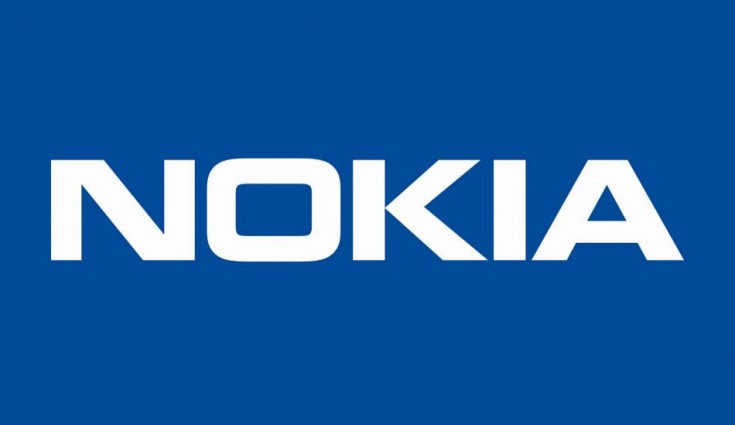RAJEEV SURI, PRESIDENT AND CEO, ON Q4 AND FULL YEAR 2019 RESULTS:
Nokia’s fourth quarter 2019 results were a strong end to a challenging year. We saw strength in many parts of our business in the quarter, delivered a slightly better operating profit than the same period in 2018, generated solid free cash flow, and increased our net cash balance to EUR 1.7 billion.
When I look at Nokia’s full-year 2019 performance, we saw good progress in our strategic focus areas of enterprise and software. Nokia Enterprise delivered exceedingly well on its target of double-digit sales growth, considerably outpacing the market. Nokia Software showed its long-term promise, with exceptional profitability expansion compared to 2018. In addition, IP Routing continued its remarkable momentum, gaining significant share and increasing profitability in a difficult market; and Nokia Technologies continued to generate robust profitability.
We recognize, however, that we have faced challenges in Mobile Access and in cash generation. We will have a sharp focus on these two areas over the course of 2020, which we believe to be a year of progressive improvement as the actions we have underway start to deliver results. In Mobile Access, we expect improvements to be driven by increasing shipments of our “5G Powered by ReefShark” portfolio; product cost reductions; better commercial management; and strengthened operational performance in services.
In terms of cash generation, we have extensive operational actions underway to improve performance. As we noted in our third quarter announcement, our Board said it expects to resume dividend distributions after Nokia’s net cash position increases to approximately EUR 2 billion. Given typical cash seasonality, we would not expect to reach that level in the first three quarters of this year. Should we exceed the EUR 2 billion level after that point, the Board will assess the possibility of proposing a dividend distribution for financial year 2020.
While I believe that 2020 will present its share of challenges, I am confident that we are taking the right steps to deliver progressive improvement over the course of this year and to position us for a stronger 2021.
| Q4 2019 and January-December 2019 reported and non-IFRS results. Refer to note 1, “Basis of Preparation”, note 2, “Non-IFRS to reported reconciliation” and note 13, “Performance measures”, in the “Financial statement information” section for details. | ||||||||
| EUR million (except for EPS in EUR) | Q4’19 | Q4’18 | YoY change | Constant currency YoY change | Q1-Q4’19 | Q1-Q4’18 | YoY change | Constant currency YoY change |
| Net sales | 6 903 | 6 869 | 0% | (1)% | 23 315 | 22 563 | 3% | 1% |
| Operating profit/(loss) | 803 | 552 | 45% | 485 | (59) | |||
| Operating margin % | 11.6% | 8.0% | 360bps | 2.1% | (0.3)% | 240bps | ||
| EPS, diluted | 0.10 | 0.03 | 233% | 0.00 | (0.10) | |||
| Operating profit/(loss) (non-IFRS) | 1 134 | 1 120 | 1% | 2 003 | 2 180 | (8)% | ||
| Operating margin % (non-IFRS) | 16.4% | 16.3% | 10bps | 8.6% | 9.7% | (110)bps | ||
| EPS, diluted (non-IFRS) | 0.15 | 0.13 | 15% | 0.22 | 0.23 | (4)% | ||
| Net cash and current financial investments1 | 1 730 | 3 053 | (43)% | 1 730 | 3 053 | (43)% | ||
| 1Net cash and current financial investments does not include lease liabilities. | ||||||||
- Full year 2019 results for non-IFRS diluted EPS, non-IFRS operating margin, and recurring free cash flow were in line with our guidance.
- Net sales in Q4 2019 were EUR 6.9 billion, approximately flat compared to Q4 2018. On a constant currency basis, net sales decreased 1%. Excluding one-time licensing net sales in Q4 2019 and Q4 2018, net sales grew 1%, reflecting improved overall industry demand and particularly strong growth with enterprise customers, driven by increased demand for mission-critical networking solutions. In full year 2019, net sales were EUR 23.3 billion, compared to EUR 22.6 billion in full year 2018.
- Non-IFRS diluted EPS in Q4 2019 was EUR 0.15, compared to EUR 0.13 in Q4 2018, primarily driven by continued progress related to our cost savings program, which resulted in lower operating expenses across Networks, Nokia Software and Nokia Technologies. This was partially offset by lower gross profit, particularly in Mobile Access within Networks. In full year 2019, Nokia’s non-IFRS diluted EPS was EUR 0.22, compared to EUR 0.23 in full year 2018.
- Reported diluted EPS in Q4 2019 was EUR 0.10, compared to EUR 0.03 in Q4 2018, primarily driven by continued progress related to our cost savings program, lower transaction and integration costs, a net positive fluctuation in financial income and expenses, lower income taxes and a net positive fluctuation in other income and expenses. This was partially offset by lower gross profit, primarily due to our business performance. In full year 2019, on a reported basis, Nokia generated a profit of EUR 18 million and a diluted EPS of EUR 0.00, compared to a loss of EUR 549 million and a diluted EPS of negative EUR 0.10 in full year 2018.
- In Q4 2019, net cash and current financial investments increased sequentially by approximately EUR 1.4 billion, resulting in a net cash balance of approximately EUR 1.7 billion.
DIVIDEND
Beginning with the distribution for the financial year 2018, Nokia started paying dividends in quarterly instalments. The Annual General Meeting held on May 21, 2019, authorized the Board of Directors to resolve an aggregate maximum annual distribution of EUR 0.20 per share to be paid quarterly during the authorization period, unless the Board decides otherwise for a justified reason. Under this authorization, the Board resolved to distribute the first and second instalments of the dividend, totaling EUR 0.10. On October 24, 2019, the Board resolved to pause dividend distributions and to not distribute the third and fourth quarterly instalments of the dividend for the financial year 2018, in order to: a) guarantee Nokia’s ability to increase 5G investments, b) continue investing in growth in strategic focus areas of enterprise and software and c) strengthen Nokia’s cash position. This was done in accordance with Nokia’s dividend policy, which states that dividend decisions are made taking into account Nokia’s cash position and expected cash flow generation.
The Board expects to resume dividend distributions after Nokia’s net cash position improves to approximately EUR 2 billion, taking into account Nokia’s expected cash flow generation. The Board would make separate resolutions on each distribution and such resolutions would be separately disclosed in connection with our quarterly financial reports.
As we expect our 2020 cash flows to show similar seasonality as in 2019, we expect net cash to be below EUR 2 billion in the three first quarters of 2020. Since the earliest we would be paying dividends would be in Q1 2021, we believe it is pragmatic to include that potential dividend paying capacity to the dividend proposal for the financial year 2020. Therefore, the board does not propose a dividend or dividend authorization for the financial year 2019. After Q4 2020, the Board will assess the possibility of proposing a dividend distribution for the financial year 2020, taking into account the net cash position, as well as the outlook for 2021.
OPERATIONAL KEY PERFORMANCE INDICATORS FOR MOBILE ACCESS WITHIN NETWORKS
During 2020, Nokia intends to provide operational key performance indicators (“KPIs”) for Mobile Access, which is within our Networks reportable segment. Mobile Access includes our product-focused Mobile Networks operating segment and our Global Services operating segment. While these operational KPIs are not measures of Nokia’s financial performance, they provide greater transparency regarding our operational progress in Mobile Access.
Within Mobile Access, our focus is on addressing profitability through four key actions:
- First, driving consistent product cost reductions;
- Second, maintaining the necessary scale to be competitive;
- Third, improving commercial management and deal discipline; and,
- Fourth, further strengthening operational performance in services.
We intend to provide updates on the following two operational KPIs in each interim report of 2020:
- First, the proportion of our 5G shipments that are “5G Powered by ReefShark”, in order to show our progress in driving 5G product cost reductions. These new products made up approximately 10% of our 5G product shipments in the fourth quarter 2019, and we expect that percentage to increase progressively over the course of 2020, ending the year at more than 35%. We expect to end 2021 at approximately 70%, and to essentially complete this transition in 2022.
- Second, our weighted 5G win rate. This metric factors in customer size and measures how we are doing in converting our end of 2018 4G footprint, as well as adding new 5G footprint where we did not previously have a 4G installed base. At the end of the fourth quarter 2019, our 5G win rate was over 100% outside of China and in the mid 90% range including China, reflecting strong performance.
Also, we intend to provide a qualitative update on the following operational KPI in each interim report of 2020:
- 4G plus 5G mobile radio market share, excluding China, on a rolling four quarter basis, in order to show that we are maintaining the necessary scale to be competitive. In the fourth quarter 2019, our share was approximately 27%, and we expect to end 2020 at approximately 27%.
OUTLOOK
| Full Year 2020 | ||
| Non-IFRS diluted earnings per share | EUR 0.25 plus or minus 5 cents | |
| Non-IFRS operating margin | 9.5% plus or minus 1.5 percentage points | |
| Recurring free cash flow1 | Positive | |
| Long term (3 to 5 years) | ||
| Non-IFRS operating margin | 12 – 14% | |
| Annual distribution to shareholders | An earnings-based growing dividend of approximately 40% to 70% of non-IFRS diluted EPS, taking into account Nokia’s cash position and expected cash flow generation. The annual distribution would be paid as quarterly dividends. | |
1=Free cash flow = net cash from operating activities – capital expenditures + proceeds from sale of property, plant and equipment and intangible asset-purchase of non-current financial investments + proceeds from sale of non-current financial investments.
KEY DRIVERS OF NOKIA’S OUTLOOK
Networks and Nokia Software are expected to be influenced by factors including:
- Our expectation that we will perform approximately in-line with our primary addressable market, which is expected to be approximately flat on a constant currency basis in full year 2020, excluding China. We have decided to exclude China, given that pursuing market share in China presents significant profitability challenges and the region has some unique market dynamics (new commentary);
- Our expectation for seasonality in 2020 to be similar to 2019, with the majority of operating profit and free cash flow to be generated in the fourth quarter (new commentary);
- Competitive intensity, which is particularly impacting Mobile Access and is expected to continue at a high level in full year 2020, as some competitors seek to take share in the early stage of 5G;
- Our expectation that we will accelerate our product roadmaps and cost competitiveness through additional 5G investments in 2020, thereby enabling us to drive product cost reductions and maintain the necessary scale to be competitive (new commentary);
- Our expectation that we will drive improvements in automation and productivity through additional digitalization investments in 2020;
- Temporary capital expenditure constraints in North America related to customer merger activity, as well as other potential mergers or acquisitions by our customers;
- Customer demand could weaken and risk could increase further in India, after the country’s Supreme Court upheld a ruling that telecoms companies must pay retroactive license and spectrum fees (new commentary);
- The potential for a temporary disruption, particularly in our supply chain, due to the coronavirus outbreak (new commentary);
- The timing of completions and acceptances of certain projects;
- Some customers are reassessing their vendors in light of security concerns, creating near-term pressure to invest in order to secure long-term benefits;
- Our expectation that we will improve our R&D productivity and reduce support function costs through the successful execution of our cost savings program, which is explained in more detail in the Cost savings program section of this report;
- Our product and regional mix, including the impact of the high cost level associated with our first generation 5G products; and
- Macroeconomic, industry and competitive dynamics.
Nokia Technologies is expected to be influenced by factors including:
- The timing and value of new and existing patent licensing agreements with smartphone vendors, automotive companies and consumer electronics companies;
- Results in brand and technology licensing;
- Costs to protect and enforce our intellectual property rights; and
- The regulatory landscape.
Additionally, our outlook is based on the following assumptions:
- Nokia’s outlook for positive recurring free cash flow is expected to be supported by an improvement in net working capital performance and improved operational results, partially offset by a more substantial difference in 2020 between profit and free cash flow in Nokia Technologies (new commentary);
- Non-IFRS financial income and expenses are expected to be an expense of approximately EUR 350 million in full year 2020 and per annum over the longer-term;
- Non-IFRS income taxes are expected at a rate of approximately 26% in full year 2020 (new commentary) and approximately 25% over the longer-term, subject to the absolute level of profits, regional profit mix and changes to our operating model;
- Cash outflows related to income taxes are expected to be approximately EUR 450 million in full year 2020 and per annum over the longer term until our US or Finnish deferred tax assets are fully utilized; and
- Capital expenditures are expected to be approximately EUR 600 million in full year 2020 and per annum over the longer-term.
NOKIA FINANCIAL RESULTS
| EUR million (except for EPS in EUR) | Q4’19 | Q4’18 | YoY change | Constant currency YoY change | Q1-Q4’19 | Q1-Q4’18 | YoY change | Constant currency YoY change |
| Net sales | 6 903 | 6 869 | 0% | (1)% | 23 315 | 22 563 | 3% | 1% |
| Networks | 5 439 | 5 276 | 3% | 1% | 18 209 | 17 404 | 5% | 2% |
| Nokia Software | 870 | 938 | (7)% | (9)% | 2 767 | 2 714 | 2% | (1)% |
| Nokia Technologies | 376 | 423 | (11)% | (11)% | 1 487 | 1 501 | (1)% | (2)% |
| Group Common and Other | 231 | 257 | (10)% | (11)% | 952 | 1 024 | (7)% | (7)% |
| Non-IFRS exclusions | 1 | (3) | (29) | (17) | ||||
| Gross profit | 2 712 | 2 761 | (2)% | 8 326 | 8 446 | (1)% | ||
| Operating profit/(loss) | 803 | 552 | 45% | 485 | (59) | |||
| Networks | 671 | 515 | 30% | 665 | 773 | (14)% | ||
| Nokia Software | 304 | 333 | (9)% | 589 | 450 | 31% | ||
| Nokia Technologies | 320 | 347 | (8)% | 1 239 | 1 203 | 3% | ||
| Group Common and Other | (161) | (74) | (490) | (246) | ||||
| Non-IFRS exclusions | (331) | (568) | (42)% | (1 518) | (2 239) | (32)% | ||
| Operating margin % | 11.6% | 8.0% | 360bps | 2.1% | (0.3)% | 240bps | ||
| Gross profit (non-IFRS) | 2 759 | 2 915 | (5)% | 8 523 | 9 035 | (6)% | ||
| Operating profit/(loss) (non-IFRS) | 1 134 | 1 120 | 1% | 2 003 | 2 180 | (8)% | ||
| Operating margin % (non-IFRS) | 16.4% | 16.3% | 10bps | 8.6% | 9.7% | (110)bps | ||
| Financial income and expenses | (15) | (89) | (83)% | (341) | (313) | 9% | ||
| Income taxes | (246) | (278) | (12)% | (138) | (189) | (27)% | ||
| Profit/(loss) for the period | 563 | 203 | 18 | (549) | ||||
| EPS, diluted | 0.10 | 0.03 | 233% | 0.00 | (0.10) | |||
| Financial income and expenses (non-IFRS) | (46) | (110) | (58)% | (337) | (358) | (6)% | ||
| Income taxes (non-IFRS) | (288) | (288) | 0% | (448) | (563) | (20)% | ||
| Profit/(loss) for the period (non-IFRS) | 821 | 741 | 11% | 1 230 | 1 272 | (3)% | ||
| EPS, diluted (non-IFRS) | 0.15 | 0.13 | 15% | 0.22 | 0.23 | (4)% |












